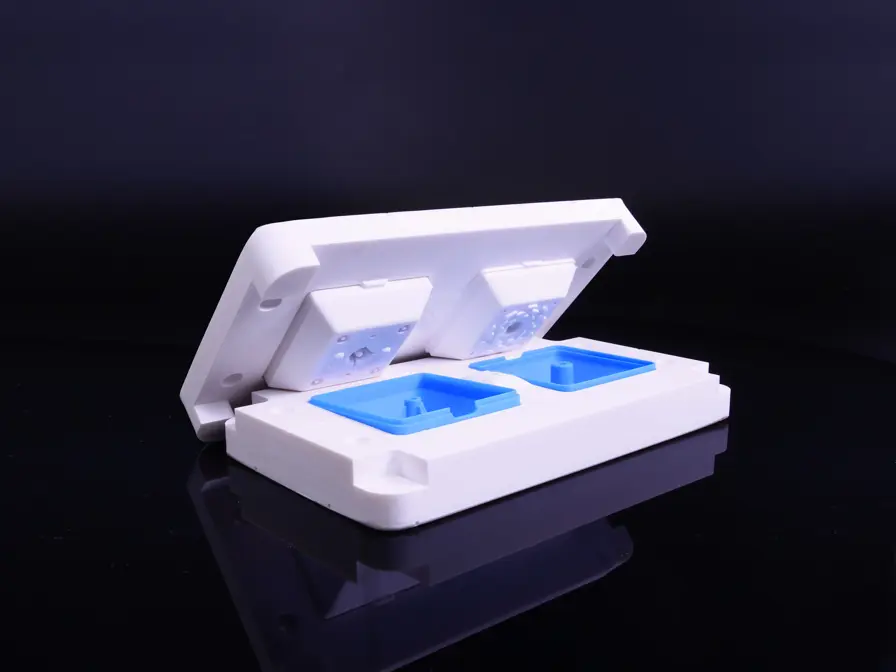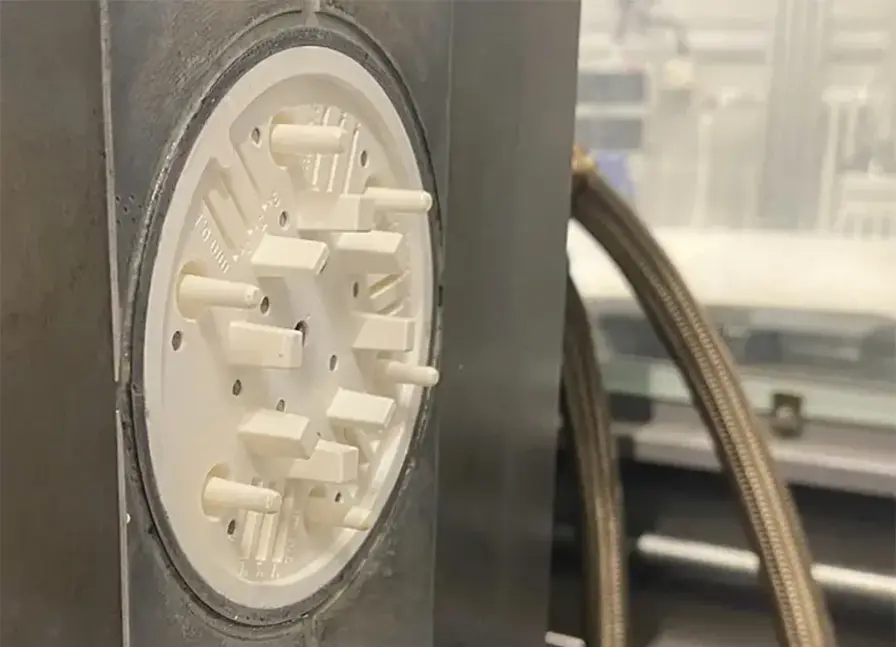Like most manufacturers, injection molders contend with a variety of challenges. Managing speed, cost, and repeatable quality typically rank among the top priorities. At the heart of these challenges is the mold tool, which plays a direct role in achieving success or failure. And one of the most significant factors is the time and cost required to make a tool that will produce the desired quantity of parts over its lifespan.
Yet it’s this very step – tool production – that often becomes an expensive bottleneck. Traditional injection mold tooling often takes weeks or even months to complete, with costs ranging from $5,000 to over $100,000 depending on complexity. This delay slows the ability to iterate designs, and the high cost of just one tool makes procuring redesigned tooling prohibitively expensive. In a competitive business environment, this can slow product development, delay customer delivery, and stall market entry.
The solution to these challenges comes in the form of rapid tooling for injection molding: lower-cost, faster-to-produce molds and inserts that allow manufacturers to validate designs, produce pilot runs, and accelerate decision-making long before final tooling is in place. What’s different compared with traditional mold tooling is the process and materials used to make injection molding tooling. Instead of machining, the rapid tooling is made with polymer 3D printing.
3D printing has become a natural fit for rapid injection molding because it directly addresses the pain points of time and cost. Instead of outsourcing machined mold production and waiting weeks to receive the tool, manufacturers can design, print, and test 3D printed injection molds or injection mold inserts in under a day. With costs typically below $1,000 per mold, 3D printing enables multiple design iterations for a fraction of the cost of conventional injection molding tooling, while simultaneously optimizing both the mold tool and the resultant part.
Additive technology also unlocks new levels of design freedom. Complex geometries, conformal cooling channels, or shapes that would be too costly or impossible to machine can be produced quickly because of 3D printing’s additive nature. The restrictions of machinability become a non-factor.
In sum, the benefits of rapid injection molding are notable: quicker tool creation, more iterations for design confidence, faster time to market, and significant cost savings at a stage in the workflow when agility is most valuable
Stratasys P3™ (Programmable PhotoPolymerization) technology was designed for applications where precision, reliability, and material performance are non-negotiable. Unlike legacy DLP approaches, P3 DLP technology tightly controls light, temperature, and force during printing to deliver consistent, high-resolution parts with excellent surface finish.
For rapid tooling and injection molding applications, P3 DLP printers such as Origin provide the key capabilities essential for producing effective mold tooling:
One material for the P3 platform stands out as particularly appropriate for rapid injection molding: Ultracur3D® RG 3280. This ceramic-filled Origin validated material was formulated to meet high-requirement use cases such as injection molding, vacuum forming, blow molding, extrusion dies, and wind-tunnel testing.
For the demanding requirements of injection molding, Ultracur3D RG 3280 has the characteristics needed to withstand the challenging molding environment:
Ultracur3D RG 3280 is best suited for low-volume production runs and prototype injection molds, especially when it’s crucial to validate the performance of molded materials before investing in full-scale tooling. Its properties also make it an excellent choice for producing complex geometries that would otherwise be difficult or costly to machine. In short, Ultracur3D RG 3280 excels in situations where speed and agility take priority over long-term mold life, giving manufacturers a fast, effective path from design to testing.
For injection molding manufacturers working under tight deadlines, Ultracur3D RG 3280 on Origin printers offers the chance to fail fast, learn quickly, and keep product development on track for low-volume production or bridge tooling applications. It’s not intended to replace hardened steel tooling for high-volume, multi-cavity production. Instead, it fills a critical gap for small-batch injection molding, pre-production validation, and agile product development—all while avoiding the long lead times and high costs of metal tooling.
Learn more about P3 DLP 3D printing technology to find out the industries it serves, how it’s used, and compatible materials. Explore the rapid tooling material Ultracur3D RG 3280.

